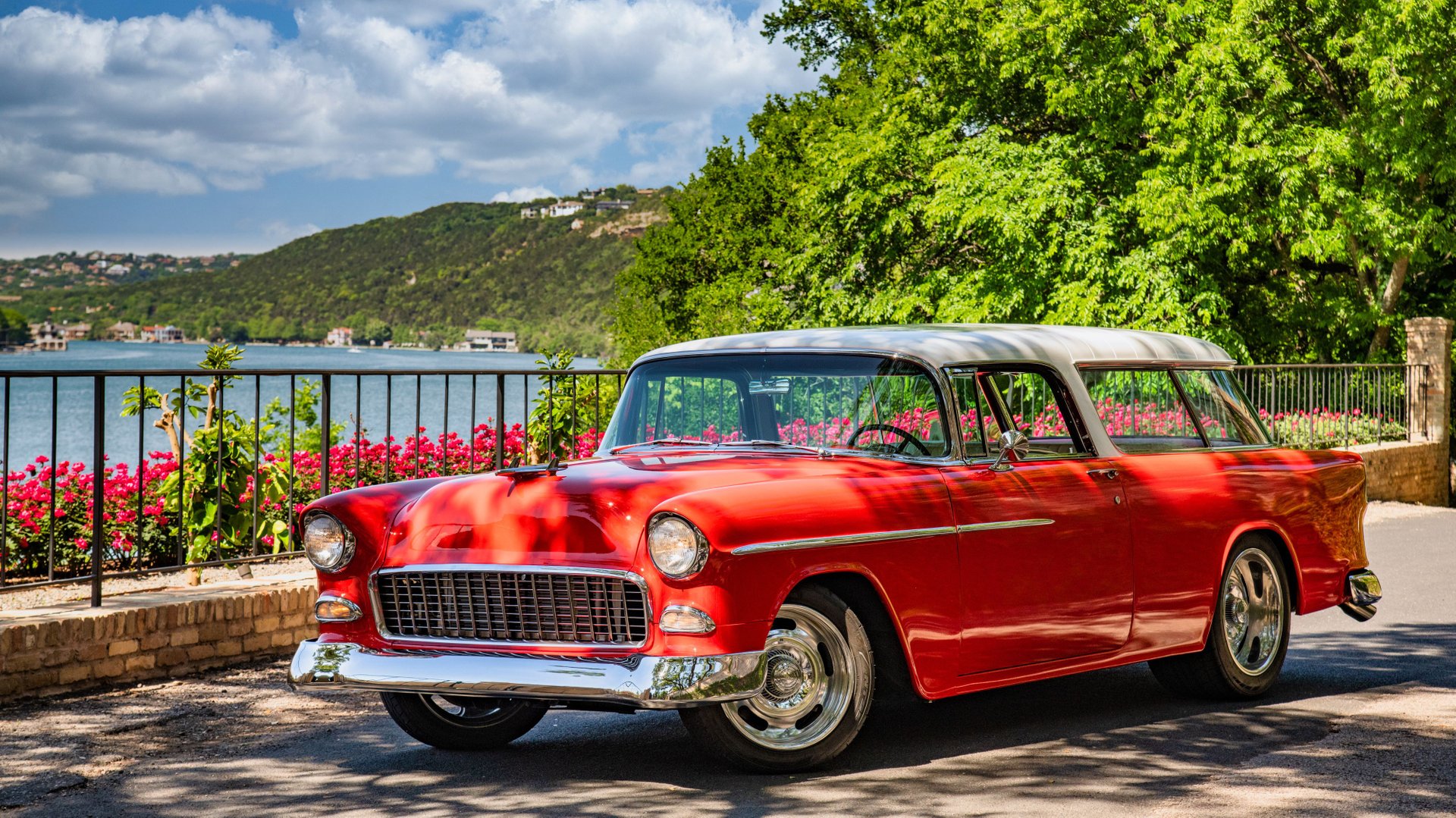Unveiling the Classic Beauty: 1955 Chevrolet Nomad’s Timeless Allure
The revolutionary 1955 Chevrolet Nomad stands as a pioneering icon of automotive history. As the original sport wagon model, the Nomad combined sleek styling, V8 power and practical utility in an innovative package. Its unique design influenced station wagons for years to come. Let’s examine the history and highlights that made the ’55 Nomad so special.
Radical New Styling for a Wagon
In the early 1950s, station wagons were still viewed primarily as utilitarian vehicles focused on hauling people and gear. Most models had upright, squared-off bodies and sparse styling touches. For 1955, Chevrolet wanted to take the wagon in a new, more stylish direction.
The result was the radically-styled Bel Air Nomad. Its defining feature was a gently sloping extended rear roofline that flowed down into angled tailgate resemble a sedan trunk. Paired with two-tone paint, chrome trim and Bel Air badging, the Nomad had a sporting, refined look unlike any other wagon.
Innovative Lowered Chassis and Seating Position
The Nomad’s dramatically raked profile significantly reduced rear headroom compared to upright wagons. To compensate, Chevrolet engineers employed an innovative solution – mounting the front and rear seats lower in the body to provide adequate interior space.
This new lowered chassis and seating position allowed the same ample room for 6 passengers found in Chevy’s conventional wagons, while enabling the sleek exterior styling. The Nomad’s combination of form and function was revolutionary.
Potent V8 Performance Options
In addition to its radical styling, the Nomad delivered serious performance credentials under the hood. The standard engine was Chevy’s dependable “Blue Flame” 235 cubic inch inline 6 cylinder. For more power, Chevrolet offered several V8 options.
The 265 cubic inch small block V8 provided 162 or 180 horsepower. Performance seekers could step up to the later model 283 cubic inch engine rated from 193 up to 220 horsepower with dual 4-barrel carburetors. This gave the family-friendly Nomad wagon some serious speed.
Functional, Flexible Interior
The Bel Air Nomad interior focused on comfort, space and practicality. The unique lowered chassis allowed for generous headroom even with the sleek roofline. Chevrolet outfitted the cabin with upscale two-tone upholstery and chrome details.
The rear compartment offered a flat, sturdy floor and vinyl side panels to make maximum use of space. A roll-down rear window provided easy access to cargo. The Nomad delivered family car versatility paired with style and ample brawn underhood.
Impact on the Station Wagon Market
When introduced for 1955, the Bel Air Nomad was an immediate hit. Chevrolet struggled to keep up with demand. With around 7,800 built, the Nomad easily outsold Chevrolet’s conventional wagon models that year. The public responded eagerly to its blend of styling, power and practicality.
The Nomad proved the sport wagon concept was a winner in the marketplace. Detroit’s other automakers took notice and quickly moved to create their own sport wagon offerings based on the Nomad formula. By the late 1950s, nearly every brand offered a Nomad-inspired sport wagon model. The original 1955 Nomad paved the way for an entire new body style.
The Nomad Legacy
Chevrolet only produced the Bel Air Nomad from 1955 to 1957, but its impact resonated for years. The model demonstrated that family wagons could be stylish, powerful, and practical all in one attractive package. It set the design standard for sport wagons that flourished in the coming decades.
Today, the ’55 Nomad is among the most collectible American cars of the 1950s. Its sleek looks and innovative qualities make it a milestone in wagon development. For Chevrolet fans, it remains the first and purest expression of the sport wagon concept.
FAQs
What made the Nomad roofline unique?
Its extended sloping rear roofline flowing into an integrated angled tailgate resembled a sedan trunk, unlike the upright squared-off rears of conventional wagons.
How did Chevrolet compensate for the lower roof?
By mounting the seats lower in the chassis to allow adequate headroom with the rakish exterior styling.
What was the most powerful engine in the 1955 Nomad?
The optional 283 cubic inch V8 with dual 4-barrel carburetors producing 220 horsepower.
How many 1955 Nomads were built?
Approximately 7,800 Bel Air Nomad models were produced for 1955.
Why is the ’55 Nomad so iconic today?
Its innovative sport wagon styling and performance made it a milestone design that heavily influenced station wagons for years to come.








